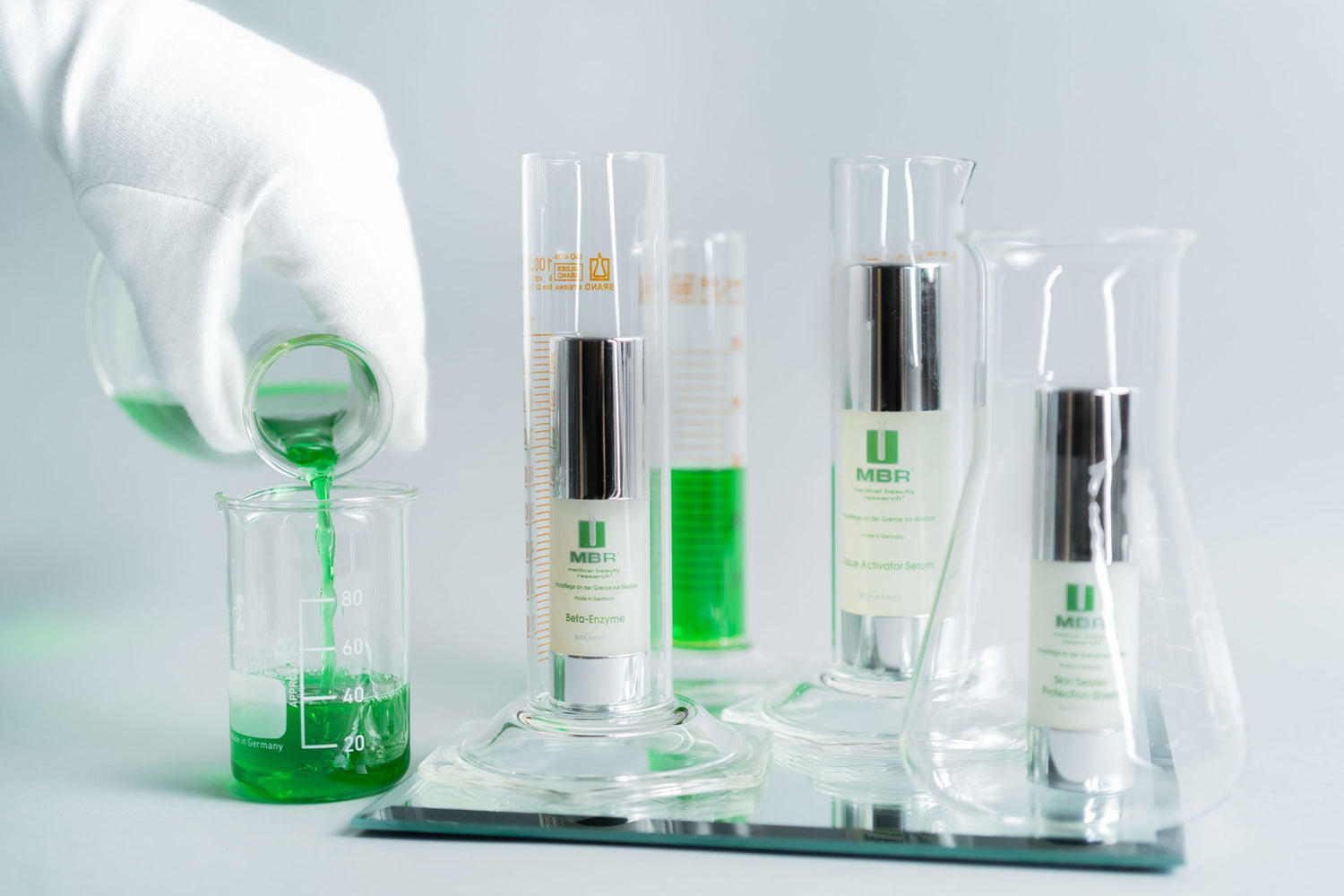
Choosing the right sunscreen is quite a time-consuming challenge. Every year anew. As a care-conscious consumer, one often feels squeezed into one of these marmot time loops. Because: Regardless of whether the summer season or a winter holiday with sports activities such as skiing, snowboarding or snow hiking is pending, high-quality sun protection should always be included. Even more. Dermatologists have long called for an appropriate use of the sun and the use of effective, multi-active care products in everyday life.
The skin is generally sensitive to direct sunlight and its UV effects. Excessive sunbathing and even a little sunburn can cause lasting, irreparable damage to our skin. Light skin types in particular must be careful not to expose their skin to the sun for too long. In general, the following applies: the lighter your skin, hair and nipples and the more freckles you have, the lower the skin’s self-protection time.
Avoid sunburn: 10 tips for optimal sun protection
Especially in countries with high temperatures, the so-called four-H rule helps (hat, hat , shirt , high sun protection factor). But just wearing clothes does not provide complete protection against harmful UV rays. The following tips from the muse BEAUTY experts are therefore important:
- Determine your skin type before sunbathing. Do you have light or reddish hair? Are you prone to having a lot of birthmarks? Do you have light skin? Are you getting a tan and getting sunburned comparatively quickly? If you can answer yes to most of the questions, then you have sun-sensitive skin. In any case, use a high sun protection factor. Because: People with light skin can get sunburn after just 10 minutes.
The complete MBR Sun Care range can be found here. -
Do not expose yourself to excessive sun rays. Avoid the midday heat. Did you know that it is better not to be by the pool at lunchtime? The water reflects the rays; these hit your body more intensely.
-
Cover sensitive parts of the body like your scalp. You can cover your head with a hat or a scarf, for example. Remember, however, that very airy clothing can let some of the UV rays through. And: Protect your eyes with sunglasses that absorb UV rays.
-
Sunscreen: Choose a (high) sunscreen that is appropriate for your skin type and the holiday region.
-
Sun care: Always put some lotion on before going out in the sun. Have you forgotten a part of your body that is exposed to the sun? Often the ears, feet or neck are not rubbed in.
-
Apply the sunscreen generously and at least 20 minutes before sunbathing.
-
Repeat the sunscreen lotion regularly, especially after bathing, drying off and sweating. Attention: Post-creaming does not extend the time you spend in the sun. Only protection against harmful UV rays is maintained.
-
Shelf life: Do not use the sun protection products from last year. And: never expose sunscreen products directly to the sun and protect them from dirt.
-
Take it easy and relaxed. Your skin needs time to get used to the sun. Use a very high sun protection factor in the first few days of your vacation.
- A moisturizer is recommended after sunbathing. And of course the golden rule also applies here: drink a lot!
Did you know that ...
- Children’s skin is ten times thinner than adult skin? For this reason, babies and toddlers must not be exposed to direct sunlight. In addition to clothing that protects the body from the sun, a high sun protection factor should also be observed. This should be at least SPF 25. However, we would recommend a significantly higher SPF around 50.
-
the sunlight is most intense around noon? So definitely avoid the midday sun.
-
a cloudy sky doesn’t protect you from the sun? Even with a completely covered skyline, up to 40% of the UV rays penetrate.
-
Men naturally have thicker, more resistant skin? Even so, they need to protect themselves from the sun and sunburn as much as women do.
- Water, ice, snow, light-colored sand or rocks that reflect solar radiation? The UV effect is increased by up to 80%. High fog in the mountains increases the UV rays by up to 60%.
First aid sun protection: The MBR Sun Guide

Source of infographic: MBR®
These are three coordinated skin care systems that together form the basis for MBR sunscreens:
- MBR UV-A / UV-B Protection System
- MBR Care / Repair System
- MBR Cell Defense System
MBR UV-A / UV-B Protection System
Consists of innovative filters that offer an unprecedented level of effectiveness in sun protection. These new broadband filters are particularly photostable and inspire with a high level of protection that can be achieved. In contrast to conventional filters, which only protect against UV-B radiation, the MBR UV-A / UV-B PROTECTION SYSTEM achieves the highest possible protection against dangerous UV-A radiation.
A large part of the sun’s rays is immediately reflected by or distributed on the skin. The rest of the radiation is absorbed. The film that forms on the skin offers long-lasting protection. Medical SUN care® thus offers active protection against light-induced skin aging, reduces the risk of skin cancer, and prevents pigment spots and wrinkles caused by the sun.
MBR Care / Repair System
The skin is cared for and regenerated while sunbathing. Selected active ingredient complexes balance dry skin. The skin’s ability to retain moisture improves and increases, and small imperfections in the skin are repaired.
High-quality care substances soothe, relax and moisturize the stressed skin effectively and ensure a silky soft skin feeling and a transparent matt effect.
MBR Cell Defense System
Stimulates the skin’s own defenses and actively counteracts light-induced skin damage. The versatile mechanism of action protects against cell damage and improves cell regeneration.
What exactly is solar radiation?
Solar radiation is made up of heat, light and UV rays.
Heat rays (infrared) penetrate the deepest into the organism. These rays are usually felt as warmth.
Rays of light are visible rays that we perceive as “sunlight”. They enable seeing.
UV rays, the short-wave, high-energy light, are invisible and responsible for transformation processes such as tanning and burning the skin.
A distinction is made between the following UV rays:
Long-wave UV-A rays (320 – 400nm) = instant tanning of the skin.
These rays even reach the deeper layers of the dermis. You are responsible for late claims. They make the skin inelastic and can cause cell defects. The consequences are light-induced skin aging and an increased risk of skin cancer.
Short-wave UV-B rays (285-320nm) = long-lasting pigmentation.
They penetrate the superficial dermis and lead to immediate damage such as sunburn if overdosed. In addition, they damage the structure of the skin, lead to dry skin and increase wrinkles.
UV-C rays (200 – 285nm)
These rays are so far of no significance when sunbathing.
MBR Sun Protection - What is the UV Index?
The so-called UV index gives the Sunburn effective solar irradiance at. The UV index varies due to factors such as:
- Cloud cover
- Position of the sun (with geographical latitude, time of day and season)
- the geographic altitude
- the thickness of the ozone layer
In the summer months from May to August, UV indices between five and eight are normal at midday in German-speaking countries. In the morning (10 a.m.) and later in the afternoon (4 p.m.) these values are halved.
How do I calculate the necessary sun protection factor?
Irradiation time + skin type + pre-tan
Would you like to find out about the global or local situation for the current UV index, for example before going on holiday? You can find out about this at the Swiss Federal Office for Meteorology and Climatology MeteoSwiss at any time.
What skin types are there?
Type I – Celtic type
Self-protection time:< 10 min
- very light skin tone
• Reddish or light blonde hair
• blue, green, or light gray eyes
• freckles
• does not turn brown, but gets freckles
• very frequent sunburn
Recommended light protection factor: UV index of 3-4 is 15 and UV index of 9+ is 25-35.
Type II – Nordic type
Self-protection time: 10 – 20 min
- light skin
• blonde or light brown hair
• blue, gray, or green eyes
• often freckles
• slow, minimal browning
• Frequent sunburn
Recommended light protection factor: UV index of 3-4 is 10-15 and UV index of 9+ is 20-25 .
Type III – mixed type
Self-protection time: 20 – 30 min
- medium skin tone
• dark brown or light brown, sometimes blond
• or black hair
• brown (blue, green, or gray) eyes
• hardly any freckles
• slow but progressive browning to light brown
• sometimes sunburn
Recommended light protection factor: UV index of 3-4 is 10-15 and UV index of 9+ is 15-20 .
Type IV – Mediterranean type
Self-protection time:< 30 min
- Brownish or olive-colored skin, even when it is not tanned
• Brown eyes
• brown or black hair
• no freckles
• quick browning to medium brown
• rarely sunburn
Recommended light protection factor: UV index of 3-4 is 10 and UV index of 9+ is 15 .
Type V – dark skin types
Self-protection time:< 60 min
- dark skin even when it is not tanned, often a gray undertone
• dark eyes
• black hair
• no freckles
• quick browning to dark brown
• hardly any sunburn
Recommended light protection factor: UV index of 3-4 is 4 and UV index of 9+ is 8 .
Type VI – black skin types
Self-protection time:< 90 min
- dark brown to black skin, even when it is not tanned
• black eyes
• black hair
• no freckles
• practically never sunburn
Recommended light protection factor: UV index of 3-4 is 2 and UV index of 9+ is 4 .
MBR sun protection - what skin type am I?
At the end of the day, the advice always follows: definitely see a dermatologist.
If a rough guide is enough for you, you can of course determine your skin type based on a few factors:
- Skin and hair color
- Freckles
- Color of the nipples
General rule: the lighter skin, hair and nipples and the more freckles you have, the lower the skin’s self-protection time.
However, a self-analysis is in no way a substitute for an accurate skin type analysis carried out by a doctor. The decisive factor is the percentage of eumelanin in the skin. This level of eumelanin can and should be determined by visiting your dermatologist.
Only after a visit to the doctor can you say with absolute certainty what type of skin you are. And which of the MBR sunscreens is best for you.
Sunbathing: How do I sunbathe properly?
- MBR sun protection: Avoid excessive exposure to the sun’s rays. Avoid the midday heat. And: even a cloudy sky lets UV rays through. Up to 40%.
-
Sunscreen: Choose a (high) sunscreen that is appropriate for your skin type and the holiday region.
-
Sun care: Always put some lotion on before going out in the sun. Have you forgotten a part of your body that is exposed to the sun? Often the ears, feet or neck are not rubbed in.
-
Apply the sunscreen generously and at least 20 minutes before sunbathing.
-
Repeat the sunscreen lotion regularly, especially after bathing, drying off and sweating.
-
Take it easy and relaxed. Your skin needs time to get used to the sun. Use a very high sun protection factor in the first few days of your vacation.
- Children’s skin is ten times thinner than adult skin? For this reason, babies and toddlers must not be exposed to direct sunlight. In addition to clothing that protects the body from the sun, a high sun protection factor should also be observed. This should be at least SPF 25. However, we would recommend a significantly higher SPF around 50.
- Remember: water, ice, snow, light-colored sand or rocks reflect radiation and increase the UV effect by up to 80%. The high fog, which is typical in the mountains, increases the UV rays by up to 60%.





